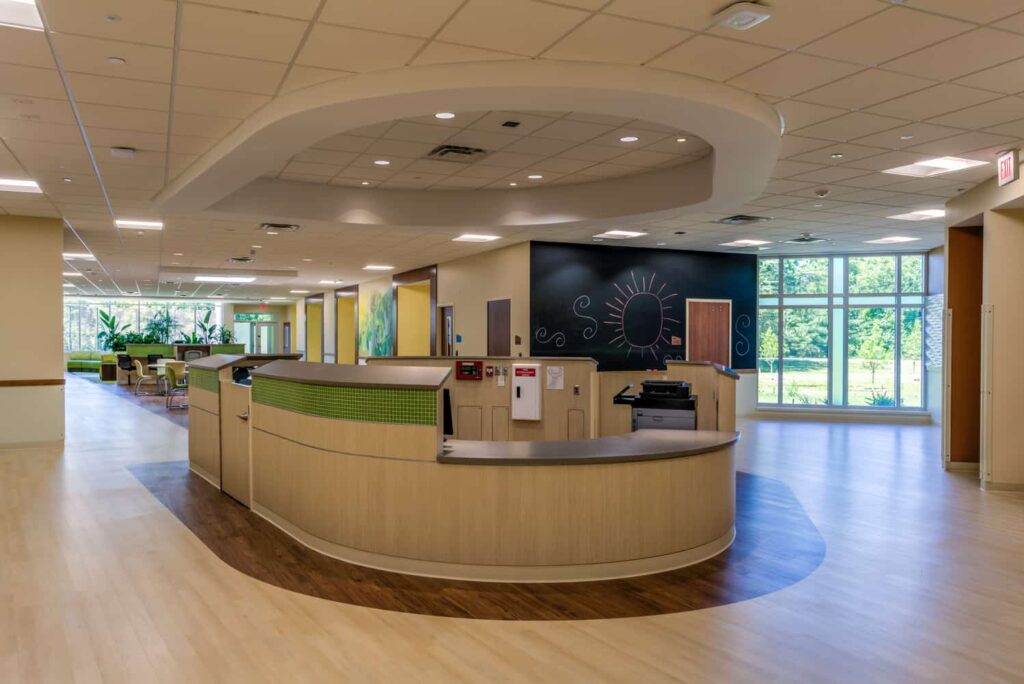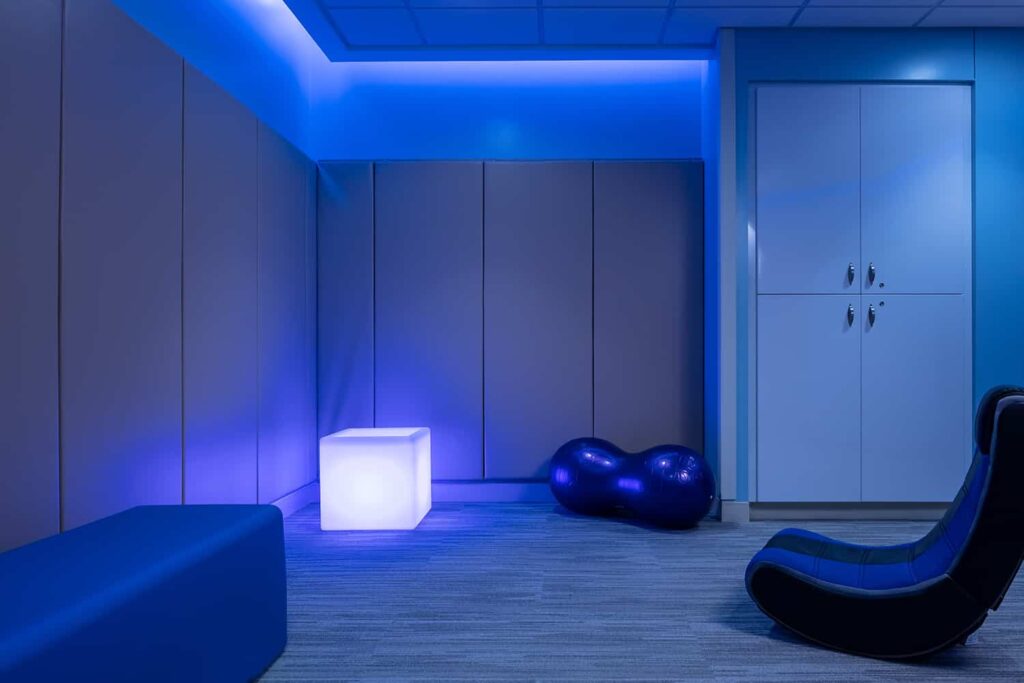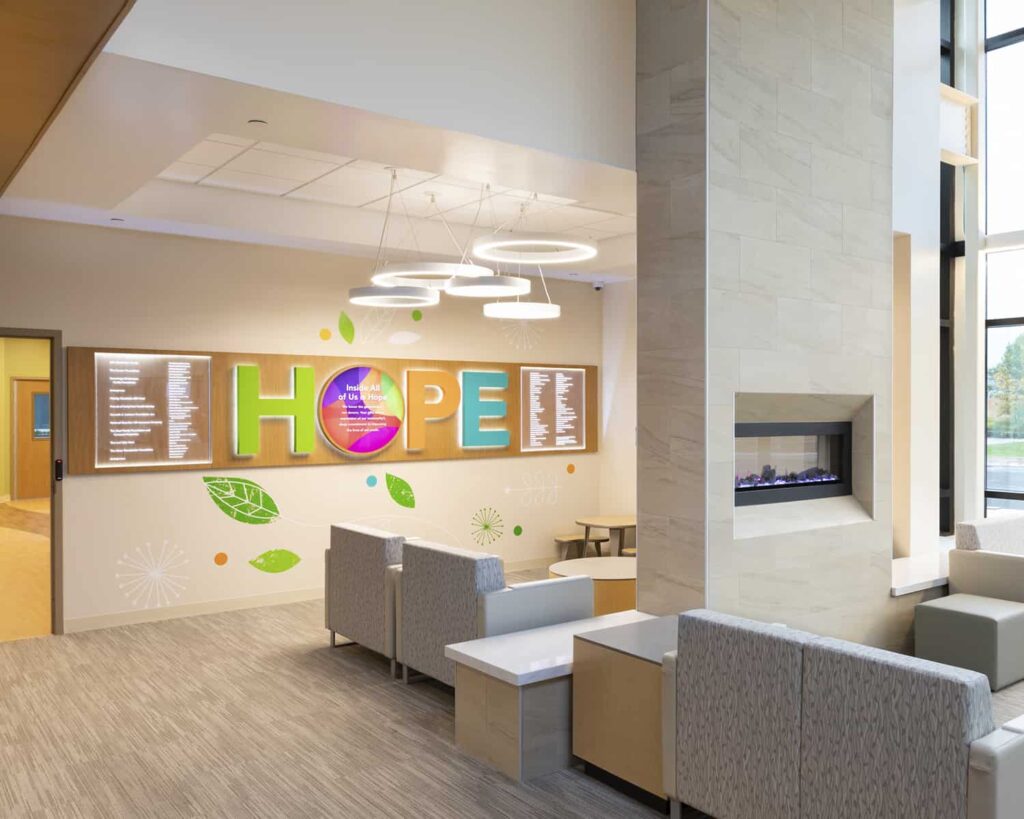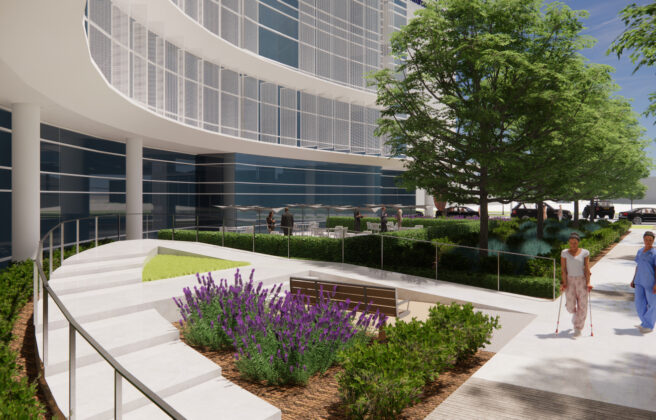As Scott Holmes recounts his evolving interest in the design of mental health spaces, it was the story of a young man Holmes met who described his experience being led to an inpatient unit that had a profound impact on Holmes’ commitment to changing the image of mental health treatment.
“The behavioral health units were in the oldest part of the building. It was in a bed tower,” Holmes recalled. “There was not a great way to get from the emergency department on one side of the campus to the inpatient unit. There was really two choices: you either take that patient through a kind of main circulation spine on the main level, or take them through the lower level, which, I think, the facility thought was a better option.
“Unfortunately, it took him through service corridors where the corridors had plywood on the walls, exposed ceilings, just lots of clutter. The young man made the comment about how humiliating and how much shame that he felt through that, and used the term, ‘walk of shame.’ I think that fundamentally has changed our approach. We need to think about what that first impression is, and, instead of thinking about the walk of shame, how can we create the walk of hope?”
Stories like that one from patients, family members, and staff led to a new approach to the design for mental health care at BWBR, one called Human-Centered Safety®. Holmes, RA, ACHA, LEED AP, and Melanie Baumhover, AIA, LEED AP, talked about the development and application of that approach on the Side of Design podcast as a prelude to their upcoming webinar presentation on March 18 with the Center for Health Design.
The approach of Human-Centered Safety® is different because it looks at promoting safety through design elements that go beyond anti-ligature and restrictive measures. Focused around six tenets (access, connections between spaces, technology, calm, integrated safety, and culture), the human-centered approach places dignity and an environment of hope at the center of the strategies, promoting safety through the environment of care.
“Anyone who’s worked in the environment of mental and behavioral health know that it is important for accredited agencies that you have a safe space, and in mental and behavioral health that’s often from self-harm, most frequently ligature points,” Baumhover said. “Sometimes it can be, quote, easy to only focus on ligature resistance and that self-harm and stop there. Our Human-Centered Safety® approach with the six tenets really tries to focus on the whole person, and not just looking at them as a sick person.”
In this approach, the strategy focuses on both what the space is communicating to the patient as well as how the space accommodates a patient’s movement. Where therapy and treatment occur outside of the patient room, the focus turns to creating open environments with sight lines that build trust between patient and staff, reducing corridors and pinch points that could agitate patients sensitive to their personal space, and leveraging the appropriate colors and materials to build a sense of hope and confidence that patients can heal.

“These are humans who can read, and you are not being treated as human,” Baumhover said, referencing previous strategies that would communicate safety and harm reduction first with authoritarian messages and heavy, institutional elements. “You were being talked about as an object, as a thing that needs to be managed, too.
“So [we’re] paying attention to those messages that patients are getting, and how the environment is speaking to them, literally through signage, but also through the very elements of the space and what it tells them about their condition, what they can feel, or trust about their condition, and how they might move into that space.”
“It’s not just the patient,” Holmes said. “It’s family members: to imagine yourself as a parent, bringing your child, knowing that your child needs help, but then showing up at a place like that and thinking, ‘Oh my gosh, what am I doing to my child?’ So I think it’s for everybody. Unfortunately, mental health has taken the backseat for a number of reasons, and it’s really time for us to bring that…parity of experience for patients and family members and for staff.”
Holmes said that improved experience of care can have a dramatic impact on staff injuries, which can have a correlating improvement in staff satisfaction and recruitment.
“The other aspect of these concepts of Human-Centered Safety® is really about trying to reduce those things, environmental triggers, or other things that agitate a patient and cause aggression, which often results in violence and staff injuries and other things,” he said. “So, really smart design, the best practice is to create space that’s not only safe for patients but are safer for staff, and when staff feel that they’re going to be safer there, they feel empowered.”
Knowing that [patients] can do things that impact how [they] feel and impact the world can be really empowering, and sometimes demonstrating that to patients can help them feel more in control.
Melanie Baumhover, AIA, LEED AP, behavioral designer
A significant contributor to the positive outcomes of the human-centered approach is giving patients a sense of control at a time in their life when the world can feel out of proportion. Color-changing LED lighting in sensory rooms or even the patient room, music station choices in bedrooms, and seating options may seem like little gestures, but they can be significant for the patient.

“Our post-occupancy evaluations of our projects, as well as environmental psychology studies that we have read, show that giving people choice and control can help them see that they can impact the world. They don’t just have to take it as it washes over them,” Baumhover said. “Knowing that [patients] can do things that impact how [they] feel and impact the world can be really empowering, and sometimes demonstrating that to patients can help them feel more in control. And when they feel more in control, they have fewer out-of-control moments, which sometimes manifests in attacking or lashing out at other patients or staff members.”
The biggest challenge, both said, is the diversity of needs that each patient brings to their treatment, including those needs defined by region or age, especially between children and adolescents who may react to spaces that either speak down to them or aren’t playful enough.
“Trauma-informed design can’t predict every trigger for every individual,” Baumhover said. “So, you look at the population that’s there. You work with the staff to try to understand what they’ve found historically. But there is no one-size-fits-all color. There is no one-size-fits-all layout. So, really, it’s a matter of working with the staff and clinicians within that unit to talk about what kind of patients do they get. What are their concerns? Who do we want to design this around?”
With a focus on the high points of a patient’s stay and where they could go after treatment, she said it’s makes the work rewarding.
“One of the most rewarding stories is when we designed a new facility and, at the open house, somebody who had been a past patient realized that we were the design team and said, ‘You know,’ tears in his eyes, ‘Thank you. This is the most beautiful space I’ve ever been in. And I really appreciate that you designed this for me, for us.’” Holmes said. ”That’s what makes it rewarding. It’s seeing the impact that it has.”








